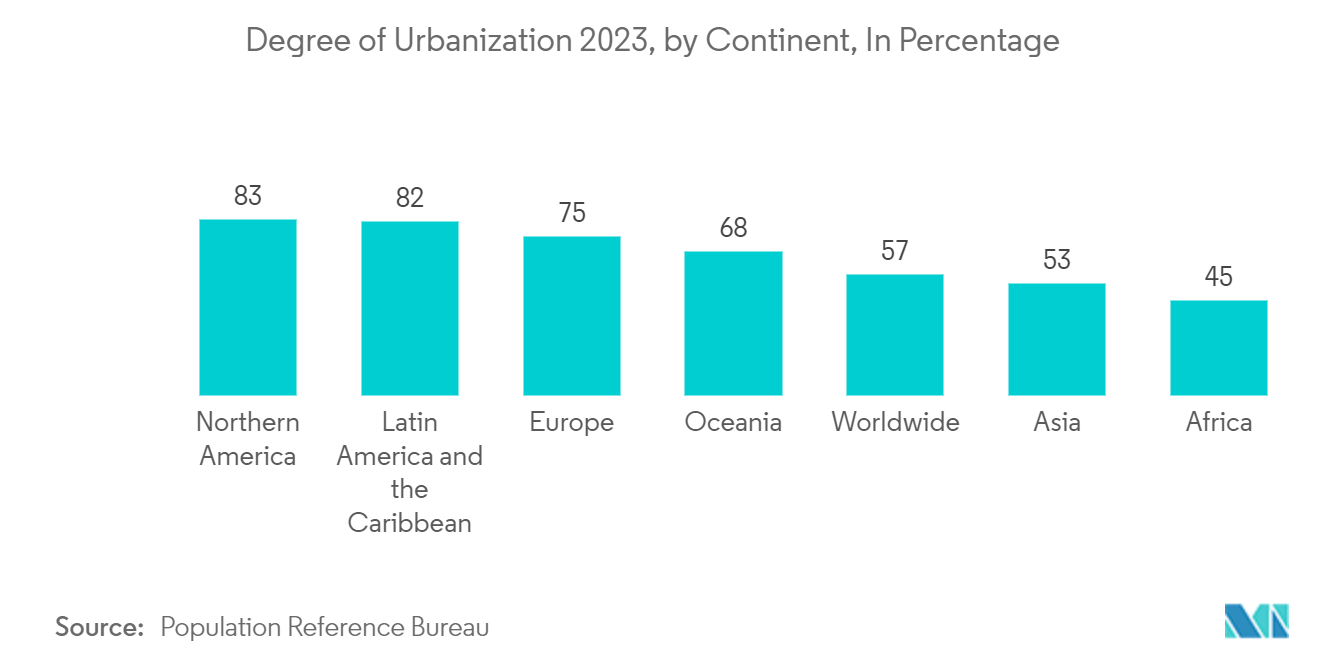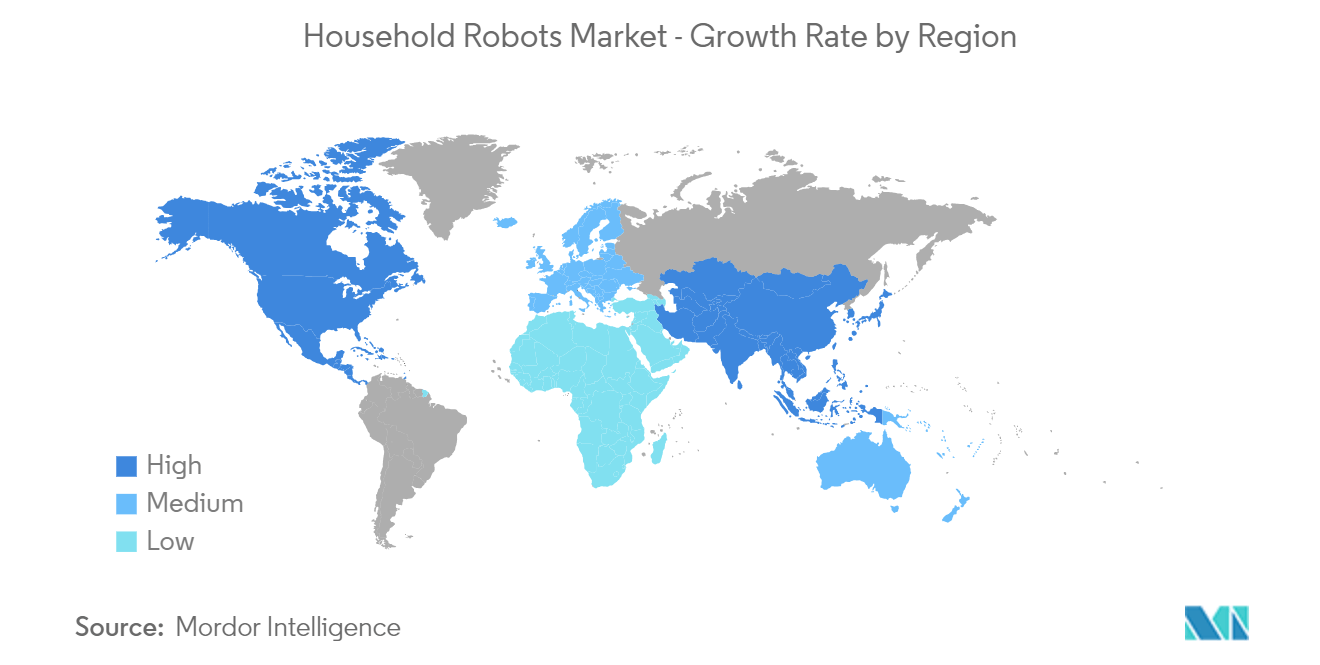Market Trends of Household Robots Industry
Robotic Vacuum and Mopping is Expected to Hold Major Share
- During the pandemic, high-quality professional household cleaning products became an obvious requirement for most people. As cleaning robots provide contactless and intelligent cleaning advantages over manual services, the pandemic outbreak has presented a strategic development opportunity in the household cleaning robot industry.
- Factors such as rapid urbanization are also anticipated to increase the demand for cleaning robots for vacuuming and mopping applications. For instance, the world is rapidly urbanizing, with more than 65 percent of the population expected to live in cities by 2050 (according to the WHO). In the current scenario, North America leads the world with 83 percent of the urban population, followed by Latin America and the Caribbean (81 percent) and Europe (75 percent) (Source: Population Reference Bureau).
- The rising number of working men and women in emerging economies has also increased demand for devices that can help save time when cleaning at home. The introduction of the Internet of Things (IoT) and Home Area Networks (HAN) technologies is expanding the residential application of cleaning robots.
- Moreover, Growing safety concerns about the use of hazardous chemicals by cleaning personnel and the implementation of stringent safety standards are expected to drive demand for robotic vacuums in the coming years. As the IoT framework is best suited to obtain accurate sensor results and perform the required tasks, the increased residential application of IoT-enabled robots supports segmental growth.
- Owing to the growing demand, market participants have been actively investing in providing advanced solutions. For example, in September 2022, robot Corp., a consumer robot leader, released the Roomba combo j7+, the world's most advanced robot vacuum and mop, and thoughtful robot OS 5.0 updates. The Roomba combo j7+ stands out from other 2-in-1 robots by vacuuming and mopping in a single cleaning job, saving time while keeping floors fresh and clean. It is designed for busy households with carpets, rugs, and hard floors and those who want a robot vacuum that can also mop.
- Similarly, the Philips R6 Slim Robot Vacuum Cleaner was released in China in January 2023. The vacuum would include a 0.4 L onboard dustbin, a 2,700 pa suction power, and several brushes to help remove and capture debris. The two mop heads on the robot vacuum cleaner could rotate up to 120 times per minute and exert 6 N of force while cleaning the owners' floors. During the projection period, the company's actions are anticipated to increase demand for robotic vacuum cleaners.

Demand in Asia-Pacific is Expected to Grow Significantly
- The Asia-Pacific region is expected to drive the market by growing significantly as a result of the widespread adoption of household robots in economies such as China, Japan, and India. The rapid development of robotic systems by Chinese and Japanese companies may increase the demand for and consumption of cleaning robots in the region.
- The region is one of the rapidly growing cleaning robot markets, owing to widespread technology adoption and rising domestic production. Regional vendors also play an essential role in cleaning robot innovation and development. For example, Haier, a leading consumer electronics brand, launched its first-ever wise vacuum cleaner in India in May 2022. The robot vacuum cleaner with a 2-in-1 dry and wet mop has 2.4 GHz Wi-Fi, Google Home Assistant, and smart management features such as the Haier smart app, voice control, and remote control.
- Among the significant factors driving demand for household robots in the region are the region's growing urbanization rate and the changing lifestyle of the population. According to the Population Reference Bureau, China and India's urban populations are expected to grow by more than 340 million by 2030. Even a small country like Laos is expected to add about 3.2 million people to its urban population while remaining only 43 percent urbanized by 2030.
- Various government initiatives and regulations promoting the growth of the robotics industry are also creating a favorable environment for market growth by facilitating inter-organizational collaboration, which results in the development of innovative technologies. For example, the Chinese government has identified the robotics industry as critical to its economic strategy in its 14th Five-Year Plan. By 2025, China plans to become a significant source of global robotics innovation.
- Moreover, A rising elderly population, especially in countries such as China and Japan, is also expected to remain among the major factors driving the demand for household robots. According to the U.S. Census Bureau, by 2060, about 33.7 percent of Eastern Asia's population is projected to be 65 and older. In contrast, Southern Asia (18.6 percent) and Western Asia (17.9 percent) are expected to have the lowest proportions of older people during the same period.
- Additionally, the rising demand encourages new players to enter the market, increasing competition between the vendors. In addition to the entry of established market players, rising demand is boosting the region's startup ecosystem. Hence, such trends are expected to contribute positively to market growth during the forecast period, from driving demand for cleaning robots to the need for humanoid robots for entertainment and companionship.


